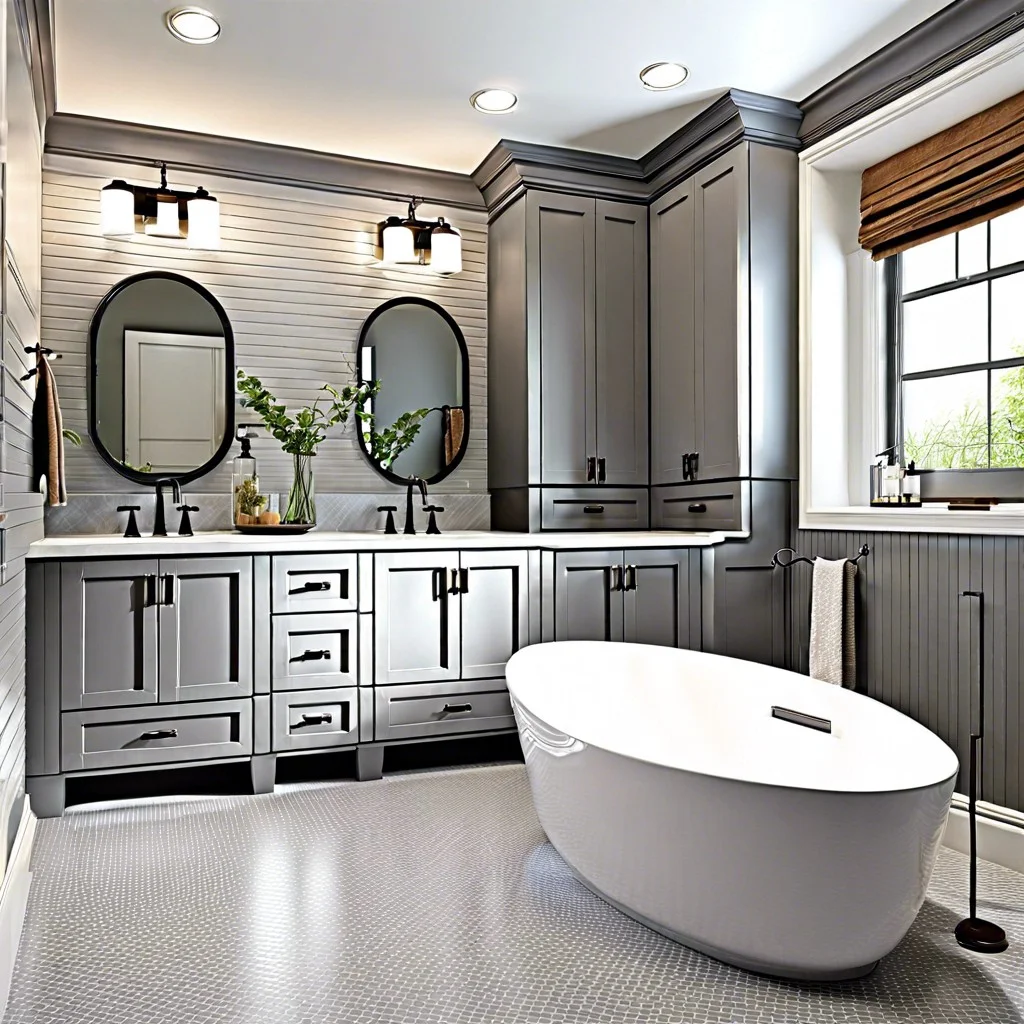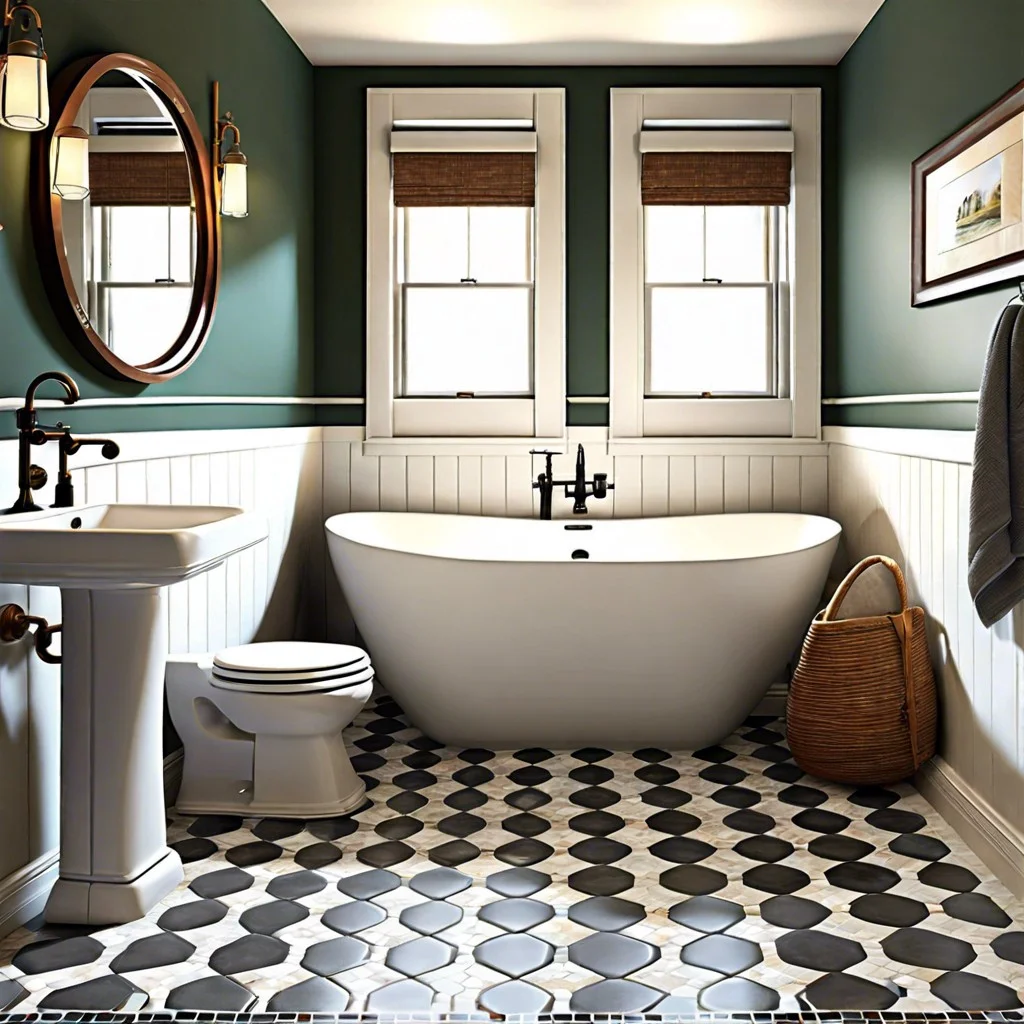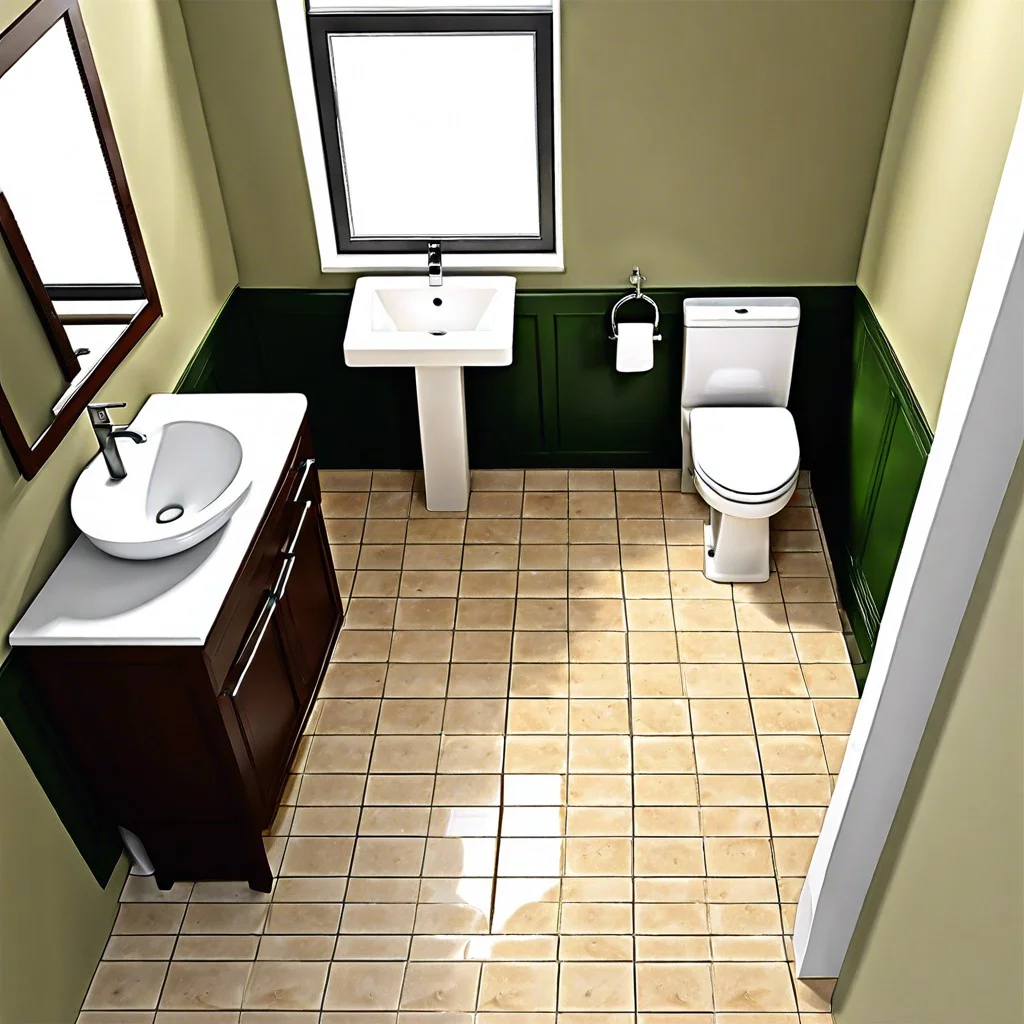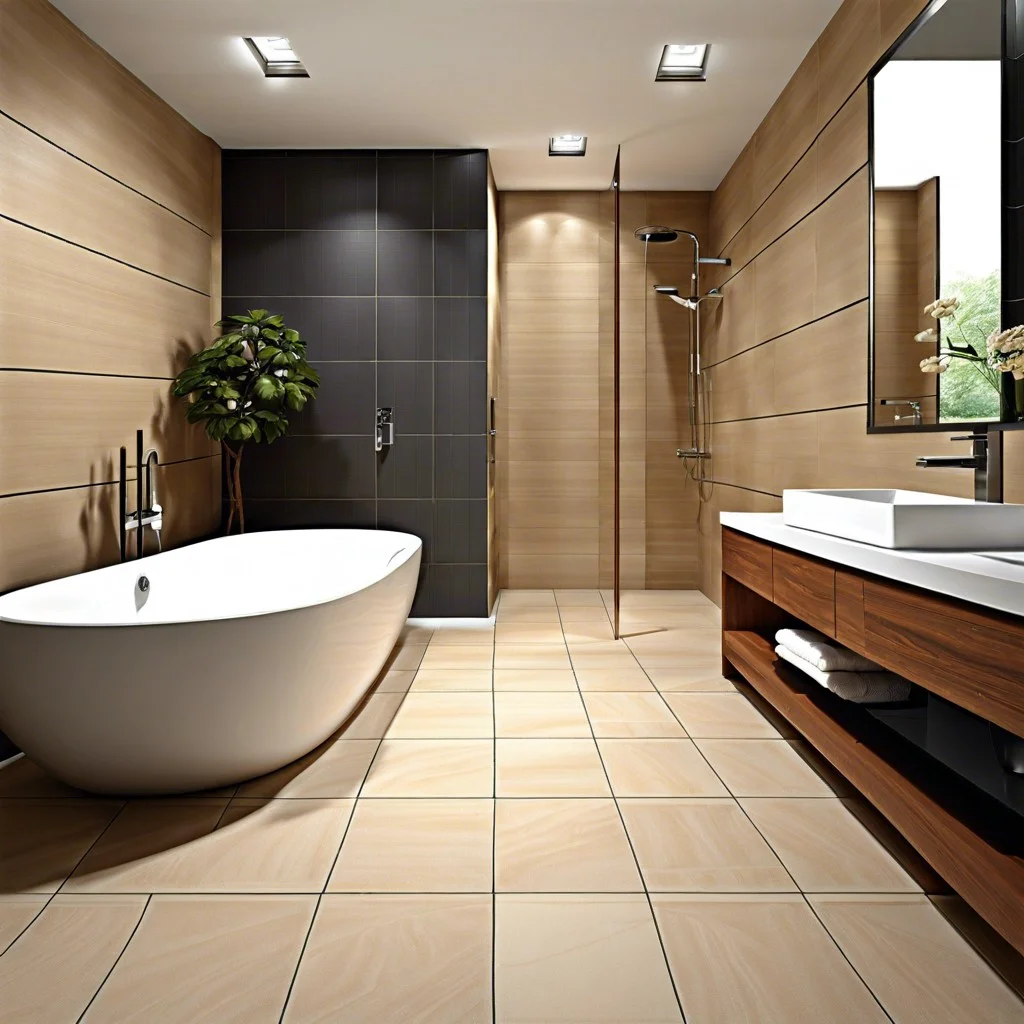Last updated on
Boost your side hall colonial’s charm and functionality because this blog post is brimming with innovative ideas to revolutionize your space.
Side hall colonial homes are timeless classics, known for their charm and elegance. With the right ideas, you can transform these traditional structures into stylish dwellings that combine the best of old-world charm and modern aesthetics.
This article will provide you with a plethora of creative and practical ideas to revamp your side hall colonial home. From smart layout tweaks to color schemes and decor choices, you’ll find all the details you need to breathe new life into your home while preserving its historical character.
So, whether you’re looking to overhaul your entire house or just refresh a few rooms, stay tuned for a comprehensive guide filled with inspiration and actionable tips.
Classic Wallpaper Patterns
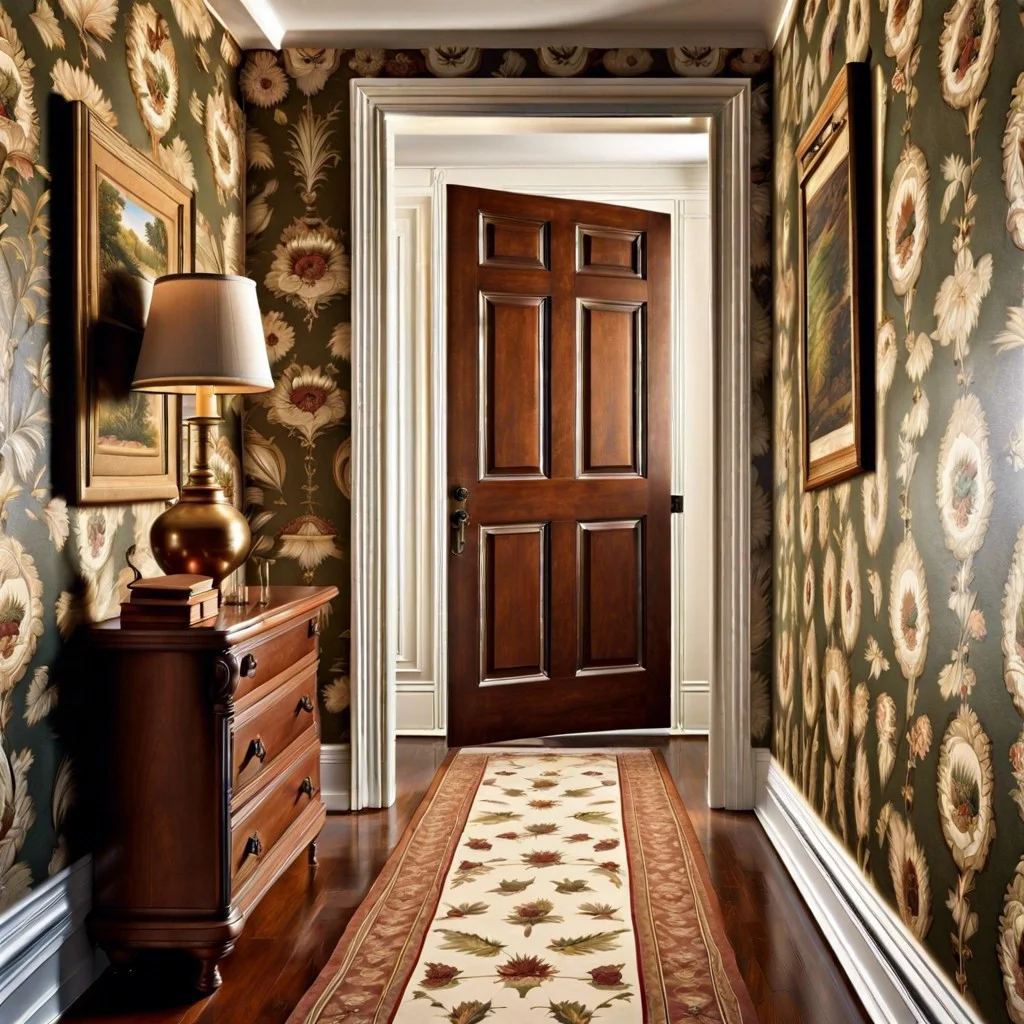
Wallpapers hold the power to transport your home back in time, delightful swirls and intricate designs add an air of authenticity.
Opt for damask or toile patterns. Damask, with its symmetric plant motifs, or toile, a storytelling design filled with complex scenes, are deeply colonial.
Favor colors like burgundy, forest green, and navy blue.
Enhance the designs with a real colonial-era touch using weathered qualities.
If color feels overpowering, consider a traditional beige or cream base with a subtle pattern.
Vinyl wallpapers make an excellent choice for easy cleaning and durability.
Choose wisely to create a lasting, classic, and tasteful decor story.
Antique Furniture Displays
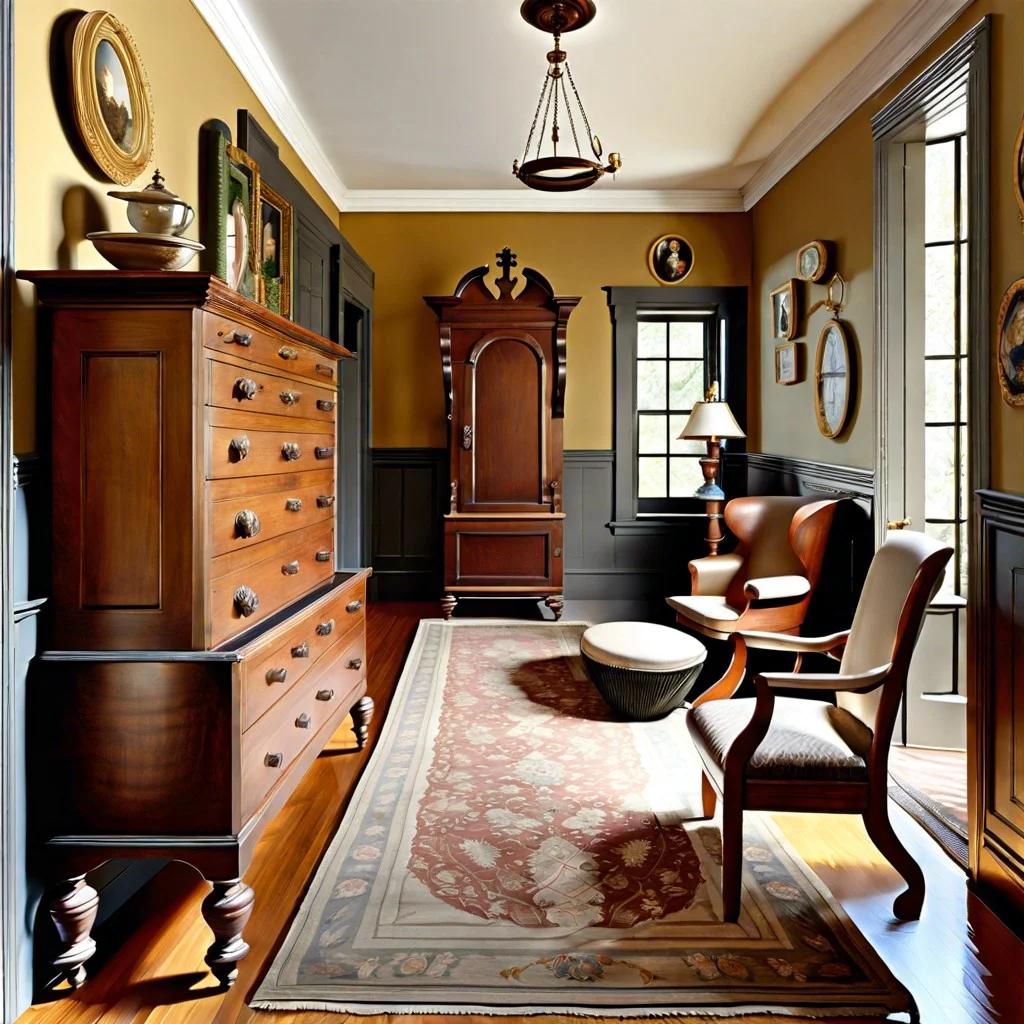
Adding character to your space can be as simple as strategically placing a few timeless pieces. An assortment of antique furniture can tell a story, conjuring images of bygone eras while adding authenticity to your colonial-styled home.
1. Position: Consider the flow of your home. An ornate sideboard could take center stage in the dining room, while a sophisticated chaise lounge might add elegance to a master bedroom.
2. Curate: Select period pieces that resonate with the colonial era yet complement your existing decor. Think vintage highboys, mahogany desks, or upholstered wingback chairs.
3. Highlight: Draw attention to the unique aspects of the furniture. For instance, detailed carvings, claw-foot details, or original finishes deserve center-stage.
4. Balance: Mix and match antiques with contemporary elements to create a balanced look. An antique wooden coffee table could pair well with a modern sofa.
5. Reflect: Showcase the rich history of antique possessions. It not only aesthetically enriches the living space but also sparks intriguing conversation.
Remember, less is often more. A couple of well-curated and strategically placed antique pieces can lend a touch of colonial charm to your home much more effectively than an overabundance of them.
Installation of Hardwood Floors
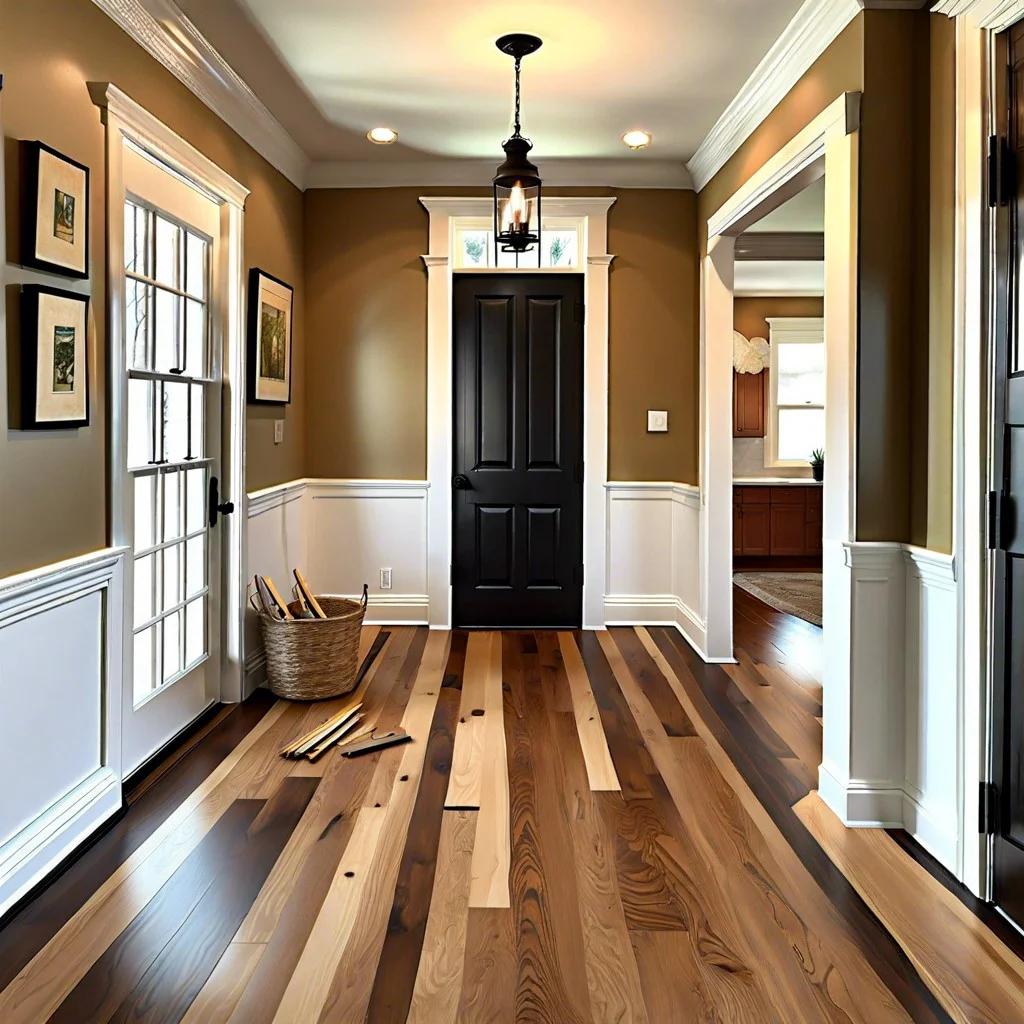
Hardwood is a classic choice that never goes out of style and carries with it a timeless elegance. Offering durability and a wide array of design possibilities, these floors can do wonders in enhancing the aura of a side hall colonial home.
Let’s break things down:
1. Consider the age: When selecting the type of wood, keep in mind the era of your home. For an authentic look, opt for species used during colonial times such as oak, pine, or maple.
2. Wide Planks: Colonial homes often showcased wide plank flooring. It gives that genuine, historic feel, and at the same time opens up the space.
3. Pay attention to finish: A matte or satin finish can evoke a sense of the past, lending an antique feel to your floors.
4. Direction matters: Hardwood floor installation usually follows the length of the room, or the home’s longest dimension, for a streamlined look.
5. Distressed is best: Thoroughly worn and etched floors perfectly mimic the worn-in style of the colonial era. Reclaimed wood could be another fantastic option.
Remember, the goal is to create harmony and consistency, making these floors an integral part of your side hall colonial home’s overall aesthetic.
Use of Pastel Color Palettes
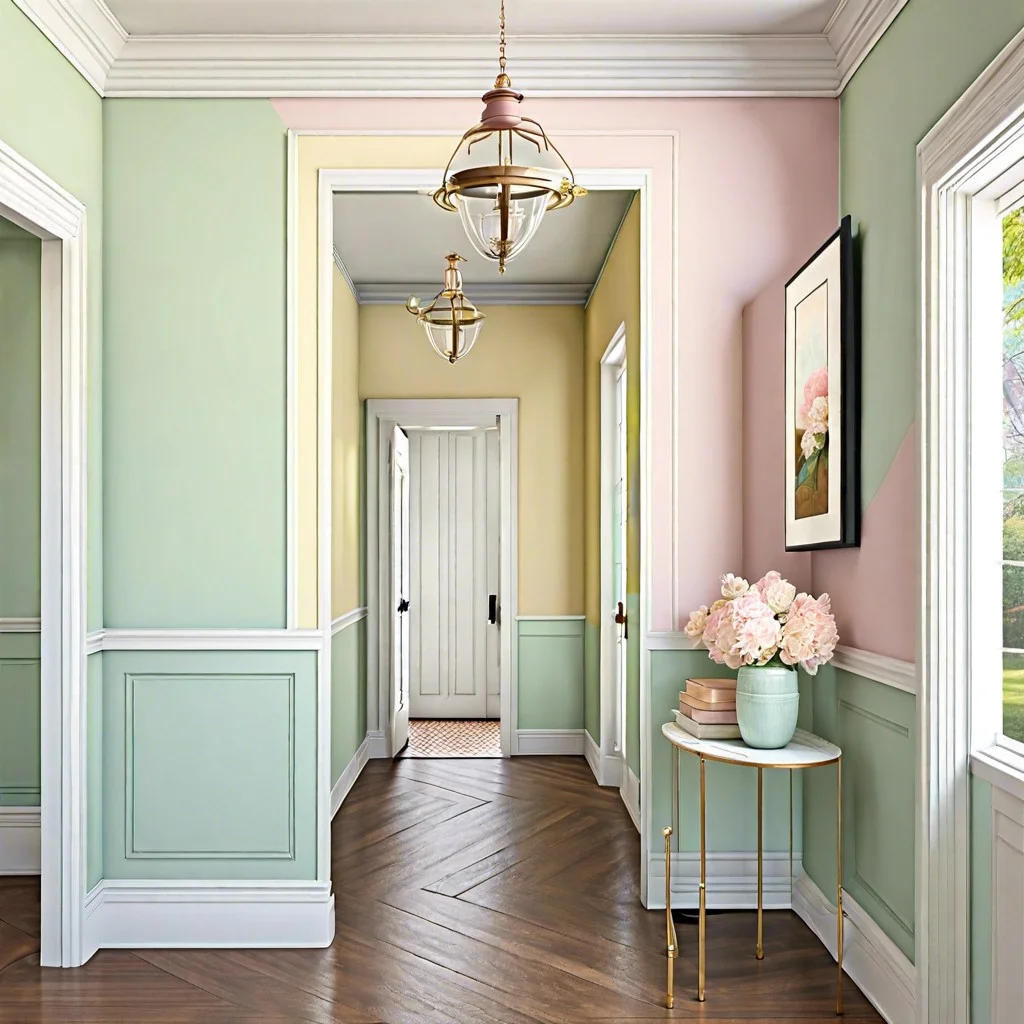
Pastel palettes bring an understated elegance perfect for your side hall colonial home. These light hues are quintessential. Not only do pastels echo the colonial era, but they also accentuate natural light, making spaces appear larger and airier.
Consider soft, warm tones like blush pink or buttercream yellow to create a welcoming feel. Cool pastels such as mint green or powder blue can lend a tranquil ambiance. These can be employed wonderfully on walls, trim, or furniture pieces.
But remember, balance is key. Pair these soft colors with crisp whites and rich wood tones to prevent the palette from feeling washed-out. Similarly, a touch of deep colonial blue or brick red can bring necessary depth and contrast.
In case of wallpaper, opt for subtle pastel patterns complementing your overall color scheme. Be it delicate floral designs or classic damask prints, choosing the right wallpaper can tie the entire room together.
Pastels truly shine in a colonial setting, elevating the sophistication quotient while retaining the home’s historic charm.
Colonial Artwork and Portraits
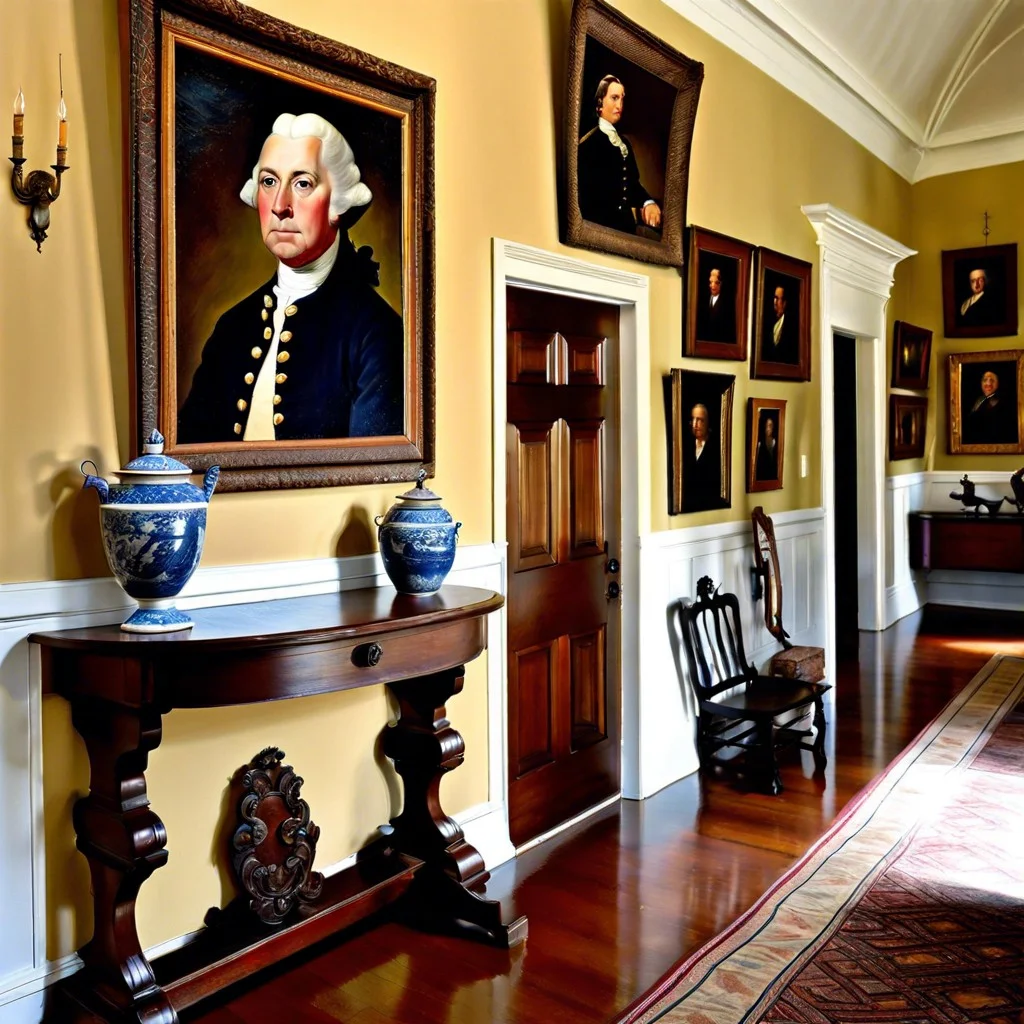
Choosing relevant artwork is key to maintain an authentic side hall colonial interior. Carefully selected pieces can help narrate a visual story, transporting oneself back in time.
The first consideration should be the age of the artwork. Authentic pieces from the colonial era naturally preserve the historic ambience of the home. If these cannot be found, attempts can be made to source accurate reproductions.
Portraits were an essential part of colonial-era decorations, with every household enjoying their family portraits. Displaying these, especially in oval or elaborate frames, can infuse an air of colonial elegance and grandeur.
Landscapes and seascapes of colonial America too hold prominence. These could include ships, colonial towns, or untouched landscapes, reflecting the pastoral reality of the age.
Keep your art, whether landscape or portrait, contained to the frames, and avoid trendy gallery walls. The simplicity and intent behind each picture is what brings out the marked finesomeness of your colonial home.
Remember, clutter detracts from the overall aesthetic, so rotate out art pieces seasonally or yearly for a refreshing change. A well-placed portrait or art piece becomes a point of admiration, preserves the simplicity, and offers the quiet dignity inherent in the side hall colonial style.
Crown Molding and Wainscoting
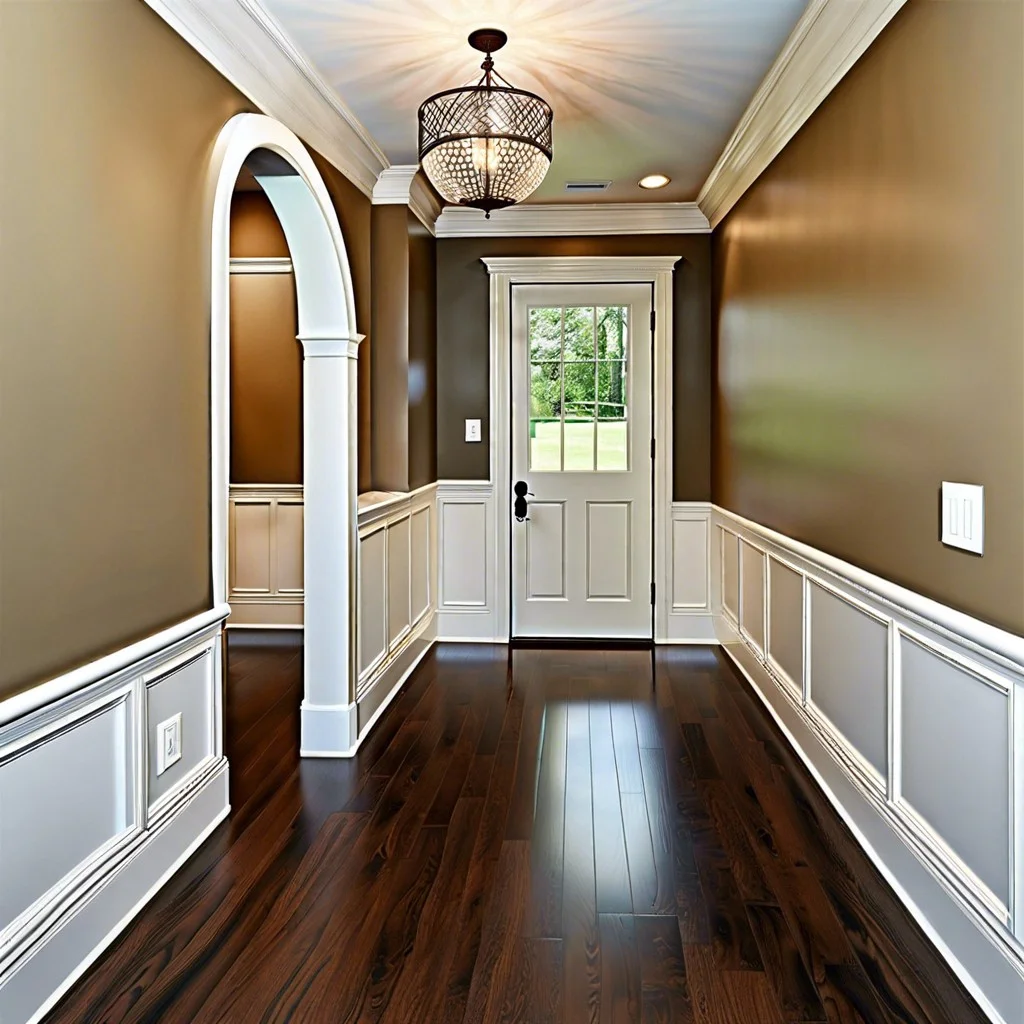
Overdoing these features could easily lead to a heavy, overly formal environment. Therefore, striking the perfect balance is key.
To begin with, crown molding offers a way to raise the height of your ceiling visually. Despite its installment being right at the top of your walls, its impact will be felt throughout the space, contributing to the overall colonial feel.
On the other hand, wainscoting serves as a protective layer and dresses up your walls. You might opt for beadboard or paneled versions, both of which emanate a certain timeless sophistication. Positioned slightly lower to the floor, wainscoting can further underscore the sense of structured elegance radiating from your colonial home.
Yet, remember, subtlety serves best. Keep the colors within the same family to ensure continuity and symmetry. Graceful coordination rather than overt embellishment should mark your style.
Use of Traditional Lighting Fixtures
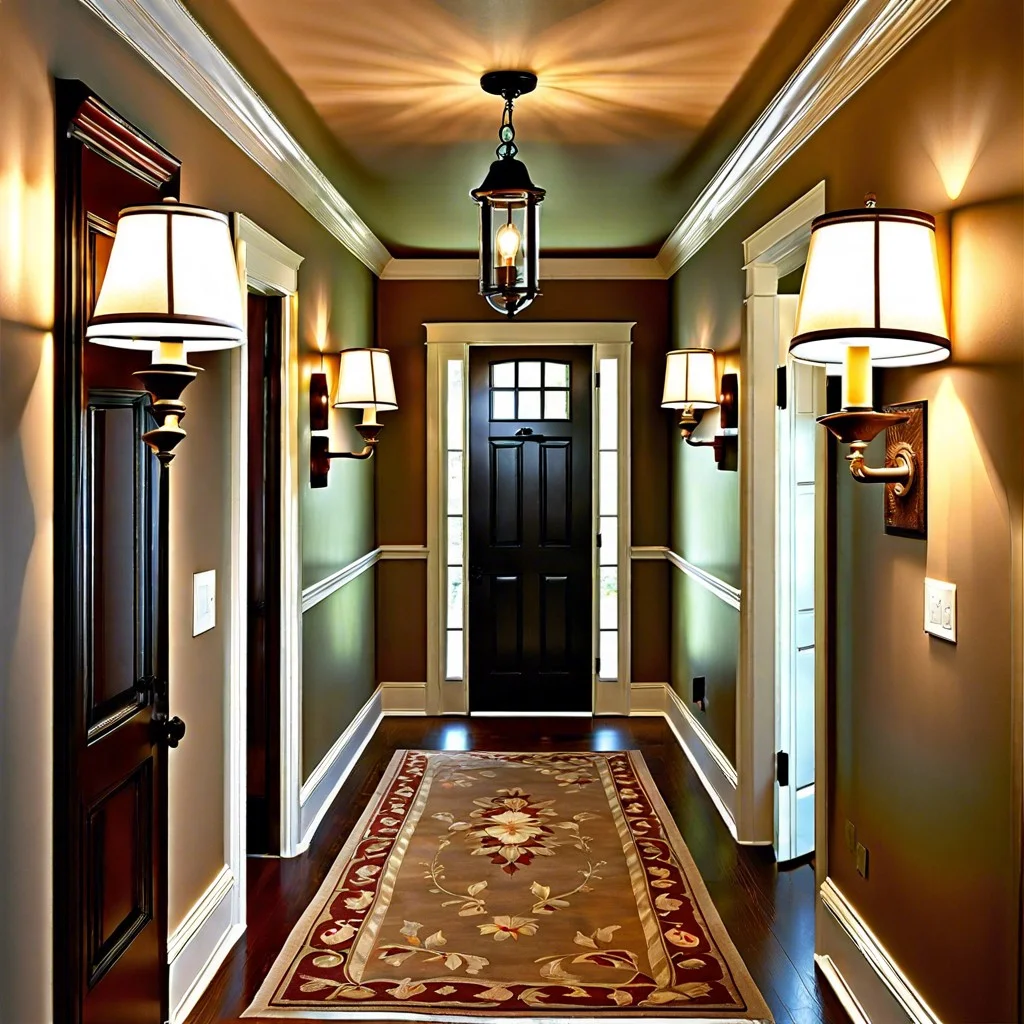
Embarking on a historical journey back to the colonial era through lighting is easier than one might expect. Start by introducing chandeliers, superb in their grandeur, primarily made up of brass or iron, into living and dining rooms.
Try not to be afraid to mix large and smaller light fixtures. Wall sconces, adding an elegant touch to hallways and bedrooms, go hand-in-hand with the colonial aesthetic.
Don’t forget about lantern-style pendants, great for inviting warmth into your kitchen. And lastly, consider outdoor post lanterns, which can infinitely up the curb appeal of your colonial dwelling.
The key is subtlety and simplicity when integrating these lighting fixtures, reflecting the minimalist style of the colonial era—avoid ultra-modern or overly ornate styles. Be sure to prioritize function—these fixtures should illuminate your space efficiently and establishing a welcoming ambiance.
Symmetrical Window Placement
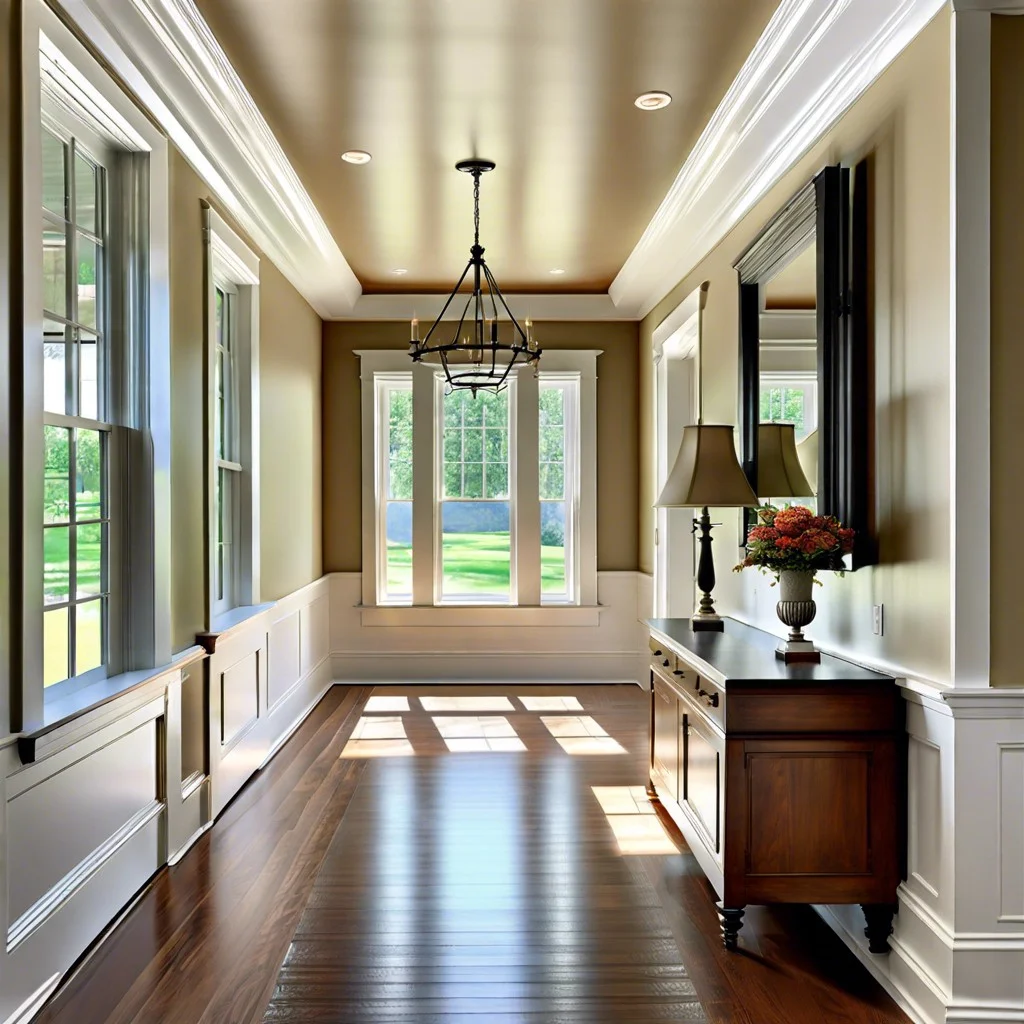
In the spirit of colonial design, symmetry denotes visual balance which provides a sense of order and harmony within the home. Where windows are concerned, placing them evenly on both sides of the home allows for consistent natural light, enhancing the interior aesthetics. Not only do they involve an exterior appeal, but symmetrical windows can also promote an inviting and harmonious interior feel.
Here are key points to consider:
- 1. Keep the size of windows identical to ensure uniformity.
- 2. Align windows with doors and other architectural elements.
- 3. Position windows opposite each other when possible to encourage cross ventilation.
- 4. Consider the amount of natural light each room requires when planning window placement.
- 5. Bear in mind the exterior view each window will offer.
Each of these points leads towards creating an authentic colonial aura in your side hall colonial home while simultaneously optimizing functionality.
Fireplace As the Focal Point
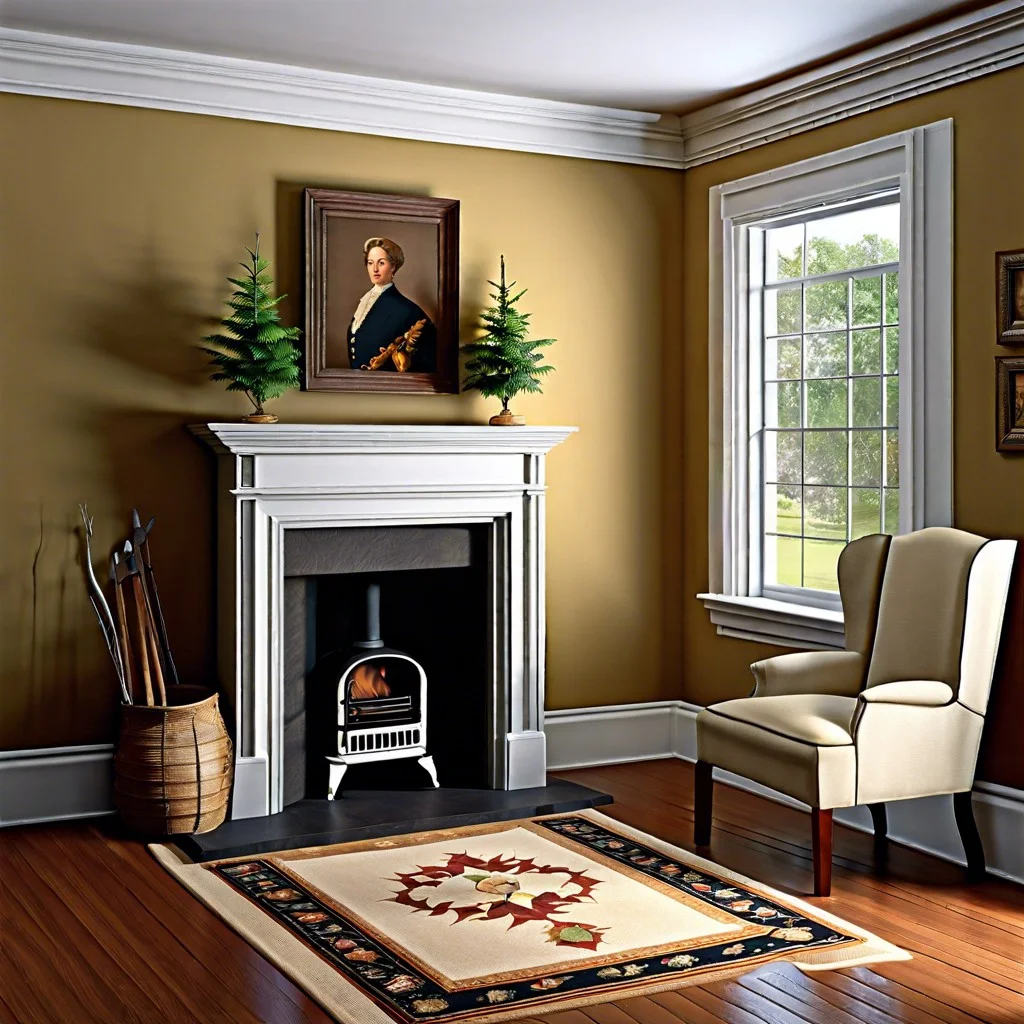
Having a stately, grand fireplace at the heart of your living space not only adds warmth but also enhances the colonial charm.
To maintain the period feel, replace modern glass doors with traditional ironwork or choose an ornate wooden mantel with intricate carvings.
Place candlesticks with beeswax or tallow candles on the mantel for an authentic colonial vibe.
A stack of firewood, even if merely for display, can also reinforce the rustic theme.
The walls surrounding the fireplace are an often-overlooked canvas, decorate them with small colonial artifacts.
Finally, place a handwoven throw rug in front, grounding this area as a cozy seating space that invites conversation.
From the rich, radiant glow to the captivating crackle of a blazing fire, every element conspires to make your fireplace an undeniable spectacle.
Remember, attention to details will take you a long way in creating an authentic colonial ambiance.
Plantation-styled Shutters for Windows
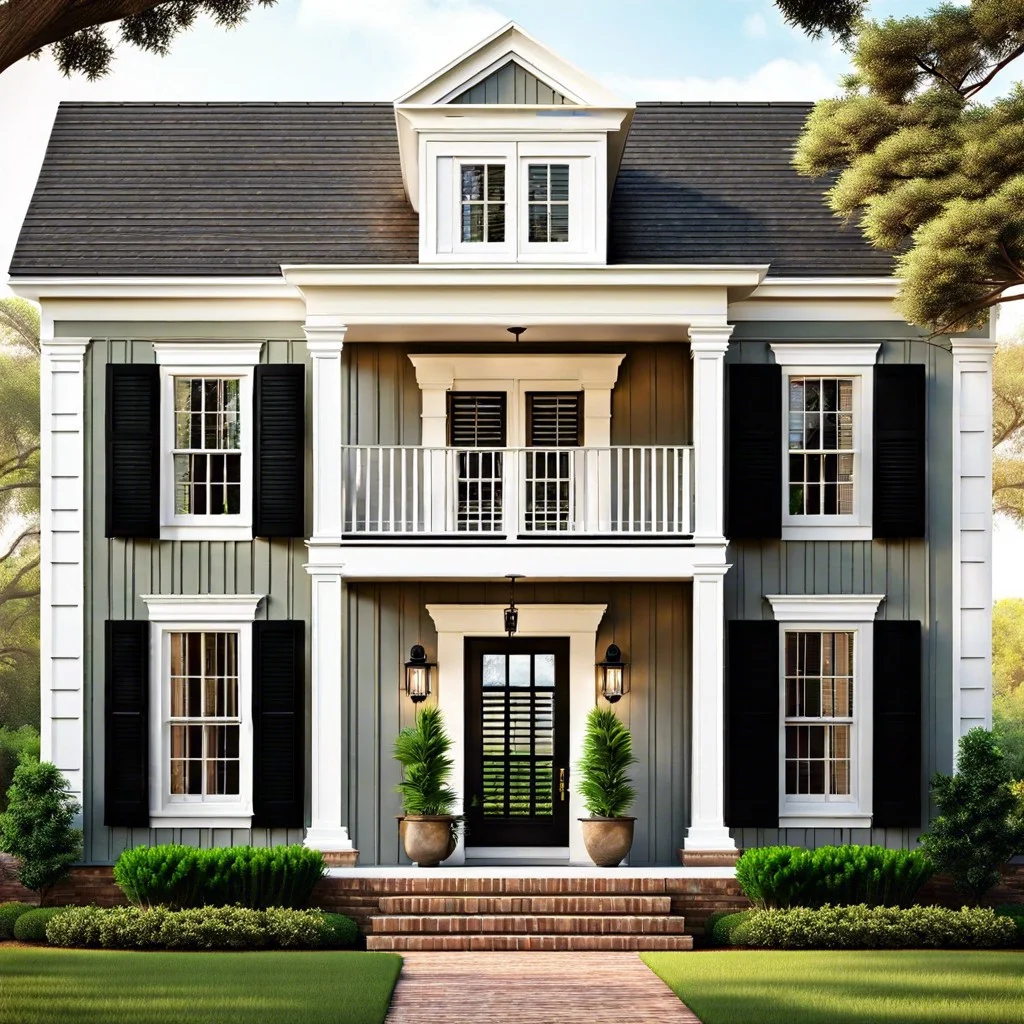
Streamlining an authentic colonial aesthetic isn’t complete without including plantation-styled shutters. These window accessories originated in the American South, where their distinct, wide louvers helped air circulation and controlled sunlight in large, expansive estates. When incorporated into a side hall colonial home, they not only enhance your window design but also provide practical light control and privacy.
There are few considerations when installing these timeless features:
- Material: Choose wood for a traditional look, but remember, modern alternatives like PVC can also offer durability and ease of maintenance.
- Louver size: Larger louvers can create the most authentic feel. Typically, these shutters feature 3.5 to 4.5 inches louver sizes.
- Color: While white is classic, plantation shutters can be painted to match your interior color scheme for a subtle look, or a contrasting hue for dramatic effect.
- Mounting: They can be mounted on the inside or outside of the window frame depending on your preference.
With these pointers in mind, capturing the essence of the colonial era through plantation-styled shutters should be seamless, offering your home a mixture of functionality and authentic style.
Framed Colonial Era Maps
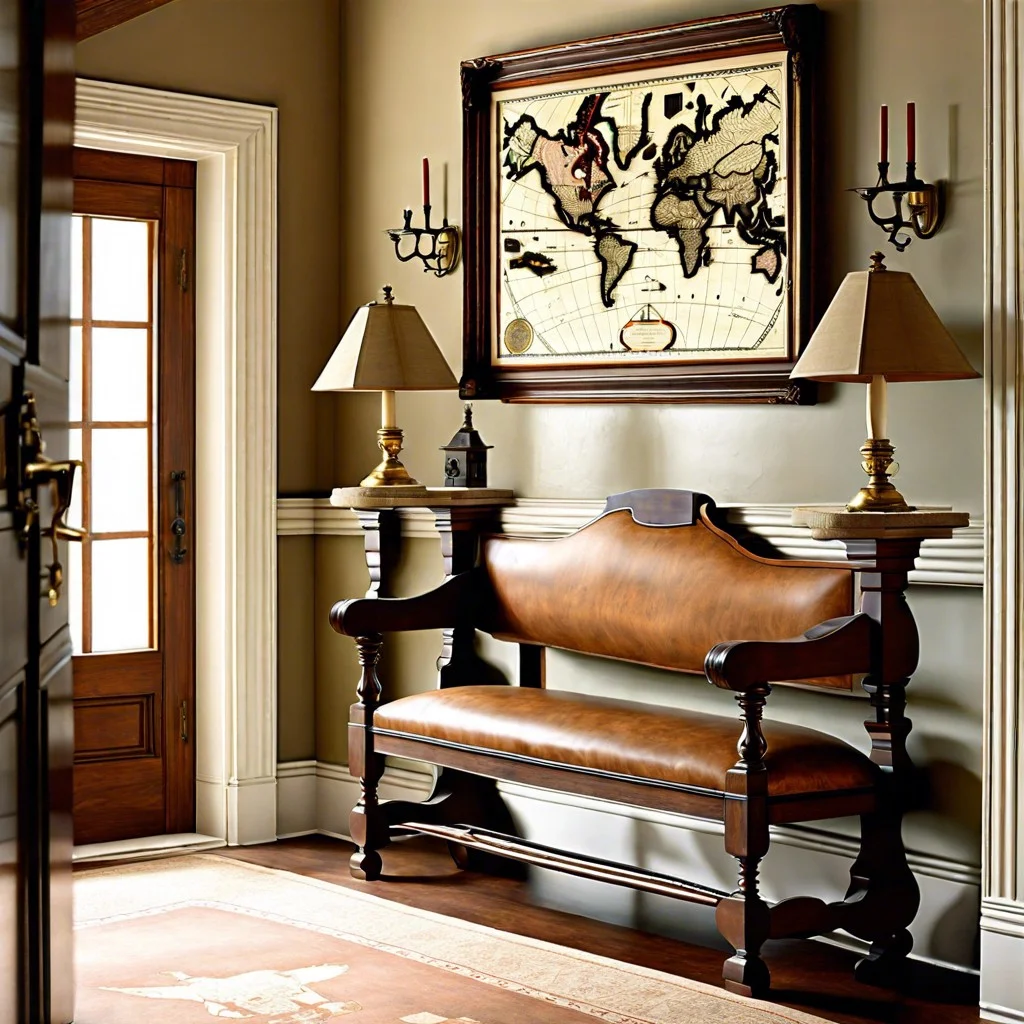
Maps from the colonial era serve to infuse an authentic historical feel to your side hall space. To titivate the walls, select vintage styled, intricate maps that provide an interesting visual focus. Opt for masterful framing to effortlessly juxtapose the old world charm with the modern ambiance.
Let’s dig a little deeper:
- Choose maps depicting historically significant regions or routes. These create thought-provoking conversation starters when you entertain guests.
- Play with size and positioning. Large, central maps deliver impact, while multiple smaller variants can be arranged to create a fascinating gallery wall.
- Employ antique or rustic frames to amplify the vintage vibe, adding an element of solidity and grandeur.
- Consider sepia-toned prints or authentic parchment for an antiquated aesthetic, harmonizing with the colonial theme.
Explore these tips to integrate age-old geographical artistry into your modern dwelling, presenting an amalgamation of time that engages and intrigues.
Quaint Colonial-era Inspired Curtains
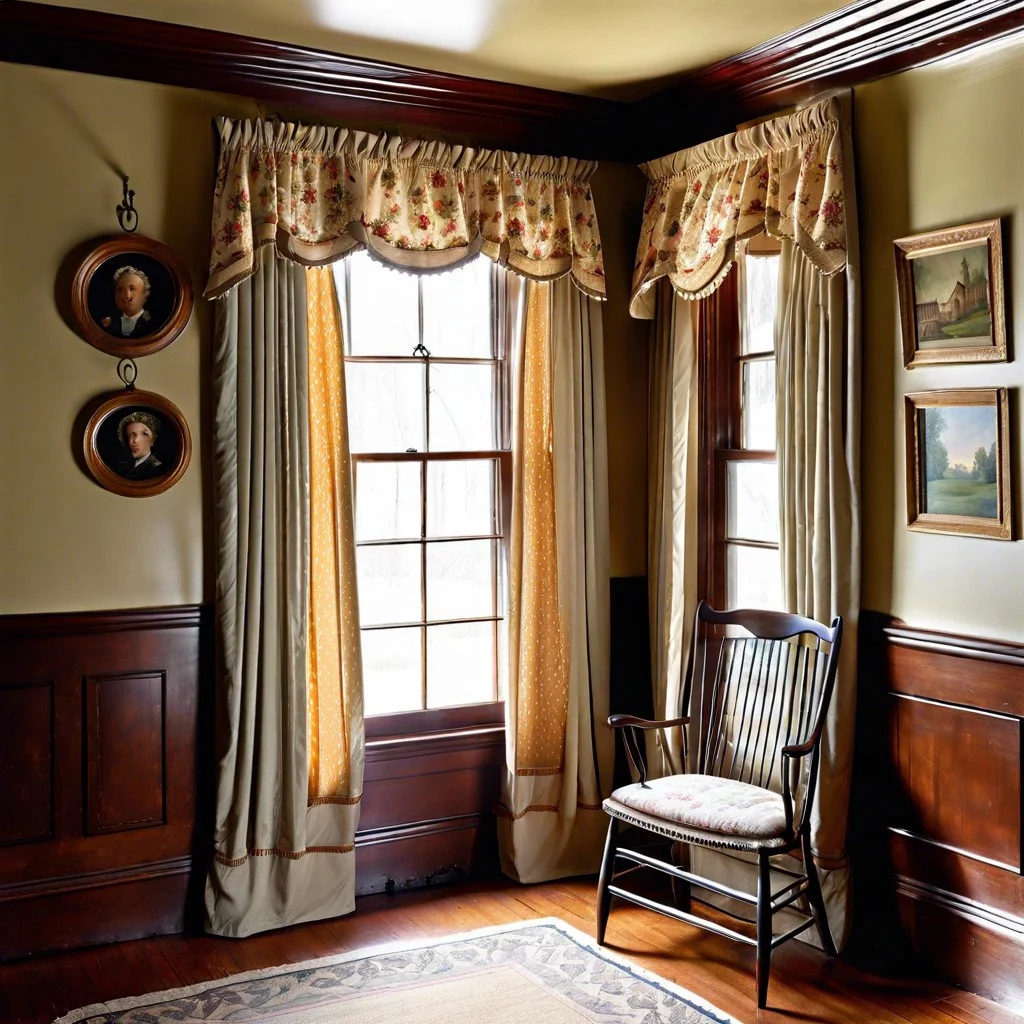
Choose patterns that evoke the colonial area, such as botanical designs, toile or even patriotically-themed prints if that fancied the residents of that time.
Floor to ceiling length works best as it adds significant height to the room, making it seem more spacious and grand.
For fabric, linen and cotton were both commonly used and add an authentic period feel while offering good light filtration.
Incorporate tiebacks, a traditional fixture in colonial homes, to hold drapes back and let in natural light during the day.
Finally, coordinating your curtains with other elements in the room, such as using shades pulled from the wallpaper or matching the pattern to throw pillows or furniture upholstery can give the space a cohesive look.
Built-in Wood Cabinetry
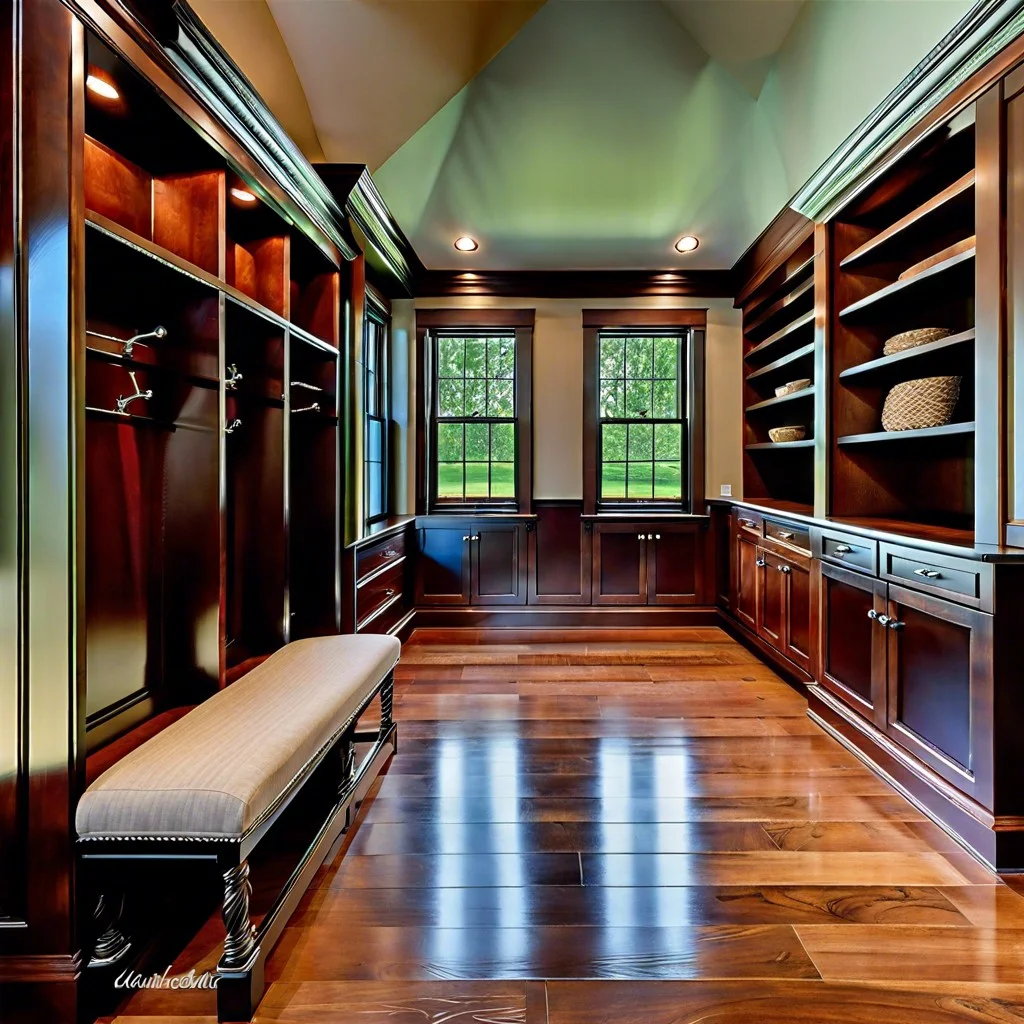
Built-ins offer a bevy of benefits. They’re not only functional but also a subtle nod to times past when built-in cabinetry was a hallmark of quality craftsmanship. Work them into your home where accommodative, like a cozy nook in the living room or an empty wall in the dining area. They can serve as both a focal point for displaying treasured items and as a discrete storage solution for day to day essentials.
Bingo, you’re adding character to your home while relieving clutter! Whether they’re full-size bookcases, corner shelves or buffet-style sideboards, they’re all winners in a colonial-style abode.
Take note of a few key details to remain in sync with the colonial style: Choose rich wood tones, ornate molding, or arching cabinet frames. Utilize brass or black iron hardware for an added period-specific touch. But remember, the goal is to merge the modern functionality with the charm of yesteryear. Speak with a skilled artisan to create custom pieces that would seamlessly blend with your décor, and you’re on track to crafting a lovely colonial haven.
Use of Brass or Iron Hardware
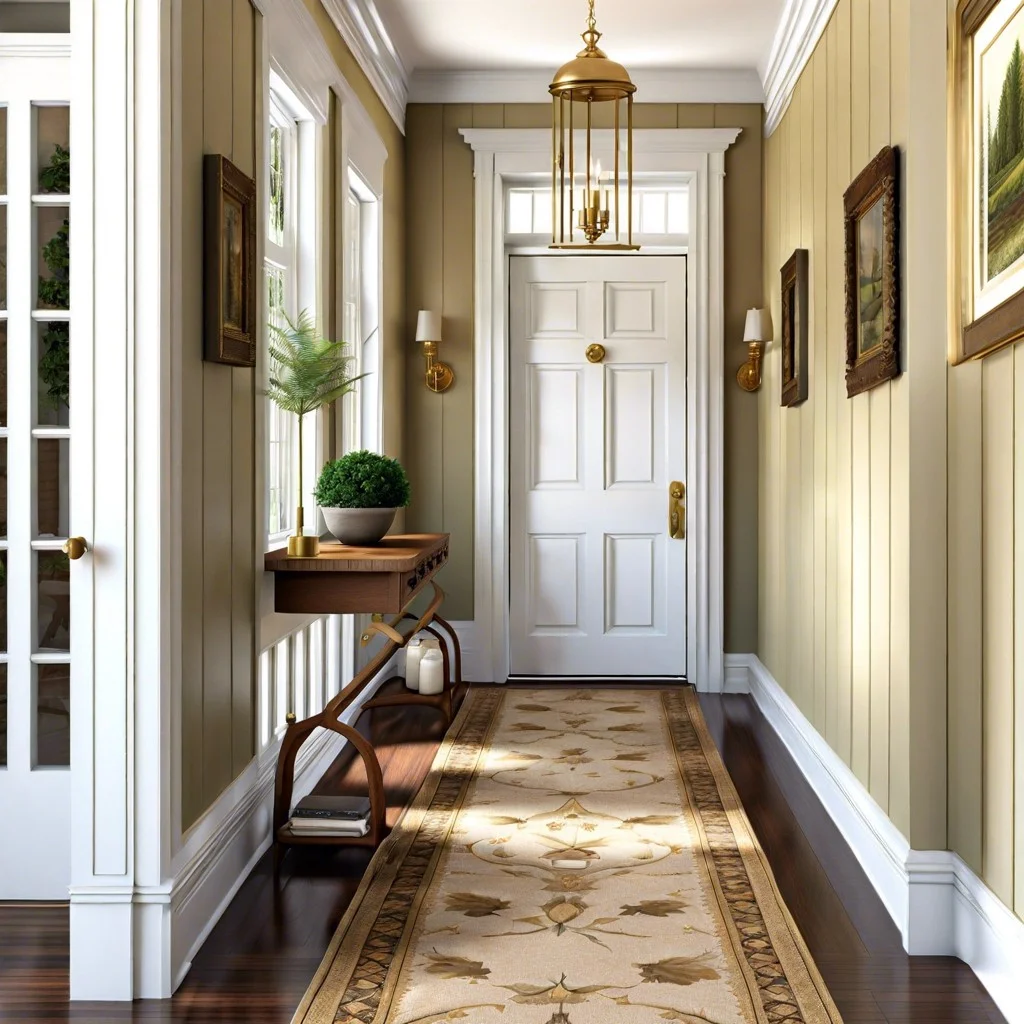
Incorporating this particular feature can significantly enhance the overall charm of your side-hall colonial home. From door handles to cabinet knobs, opting for brass or iron can provide a vintage touch reminiscent of colonial times.
Remember, every little detail matters. The more authentic the hardware appears, the greater the impact. Don’t limit yourself to just one type, instead, explore a mix and match of both brass and iron. Iron is an excellent choice for exterior features like gate handles or door knockers, while polished brass can elevate the elegance of your favorite rooms.
For an antique feel, consider weathered or hammered versions of these metals. Thus, by carefully selecting and placing these lovely hardware elements, you are one step closer to achieving that quintessential colonial aesthetics.
Decorative Ceiling Medallions
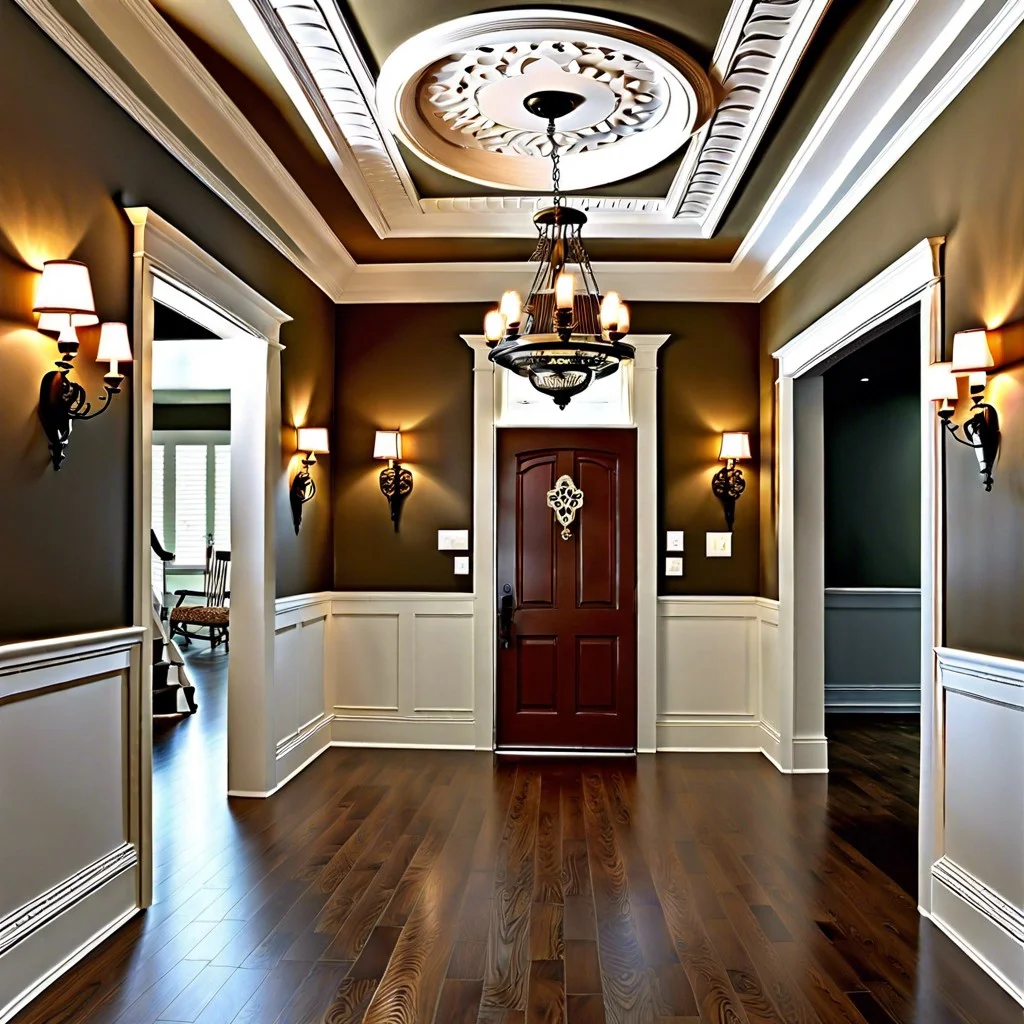
These ornamental accents, originally used in medieval times, add a certain vintage charm. They serve not just as beautiful artistic elements to gaze at, but also cover unsightly hardware of a lighting fixture.
Working with plaster, wooden, or polyurethane medallions enables you to match any room style – from intricately carved versions for a vintage feel, to sleek, simple styles for a modern space.
Painting these medallions in either contrasting or complementary colors to your ceiling can create an alluring visual effect.
Don’t shy away from using larger medallions; they can make a grand statement in a room with high ceilings.
Make sure the design aligns with the overall theme – a floral motif for a romantic atmosphere, or geometric design for a neat, polished look.
A well-chosen and well-placed ceiling medallion can be the crowning glory of your ceiling decor.
Enclosed Porch or Sunroom Addition
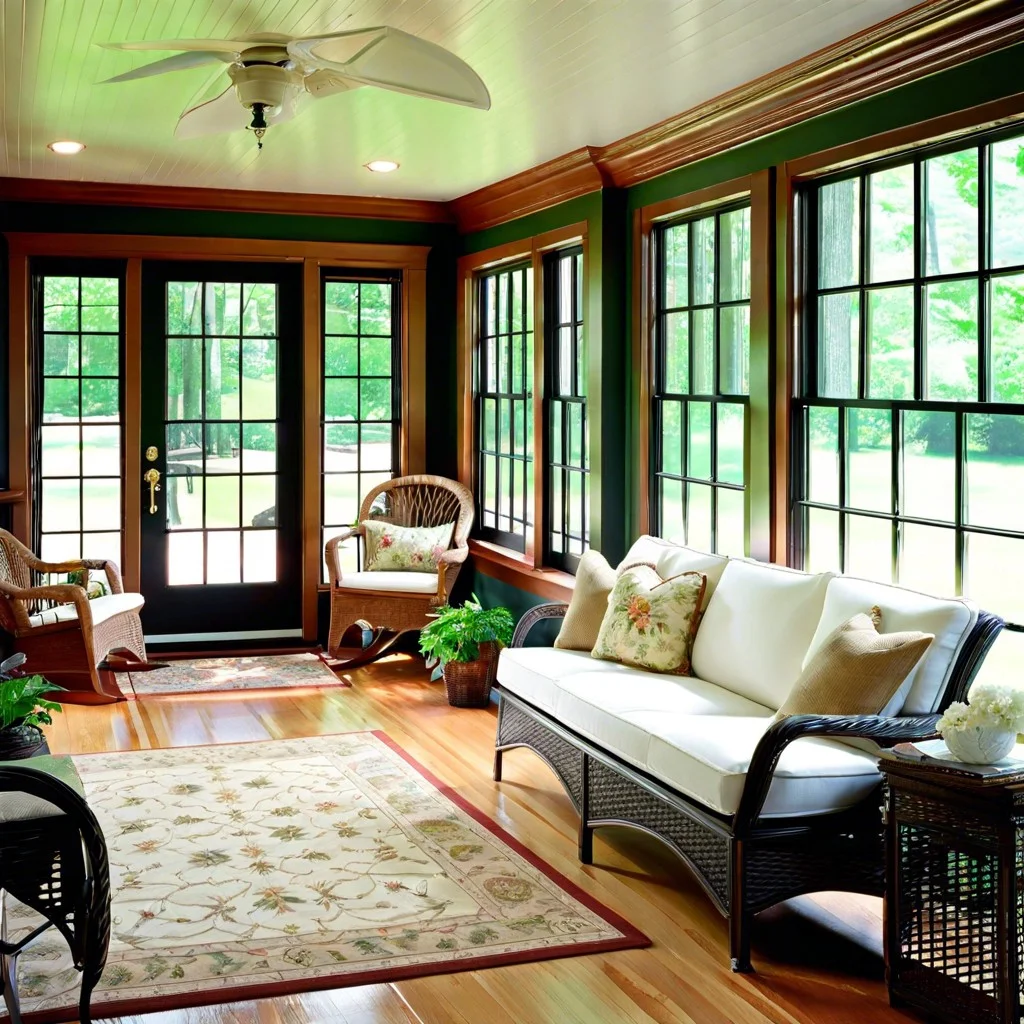
With this addition, your home gets extended living space whilst inviting more natural light indoors, creating a relaxing zone with views of the outdoors.
To keep the colonial style intact, opt for large windows with muntin bars and classic style French doors.
Emphasize the vintage feel with casual wicker furniture, maybe a classic rocking chair.
Adorn the walls with botanical prints.
Remember, a sunroom doubles as a green space – potted plants are your best companions here.
Incorporating birdhouses and feeders nearby brings life and movement, nodding to the harmony with nature that is intrinsic to the colonial period.
Keep all elements appropriately weather-resistant.
Period Appropriate Landscaping
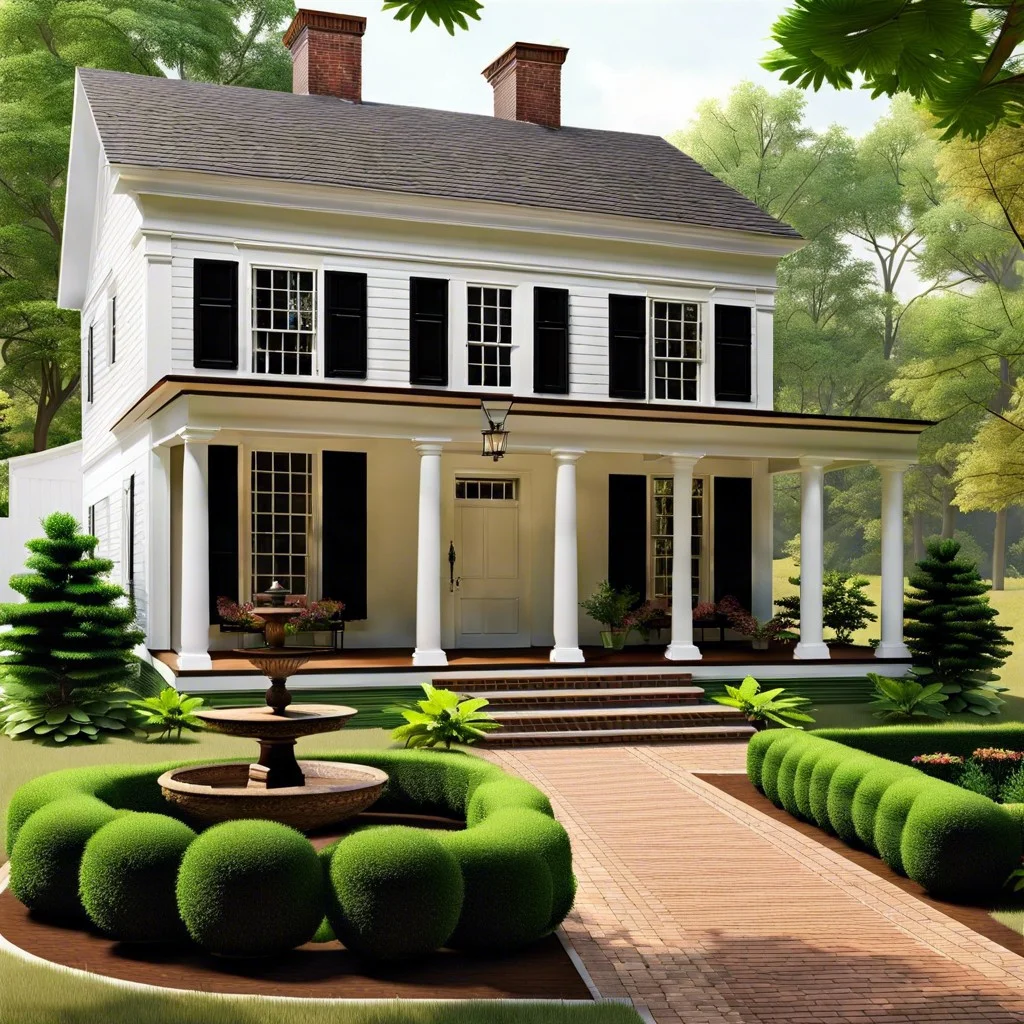
In aligning your home’s exterior look with its colonial interior, a key aspect to consider is the style of your garden. Colonial gardens were practical, making use of vegetables, fruits, herbs and medicinal plants in neatly arranged beds bordered with low boxwood hedges. While the utilitarian nature of these classic gardens may not be necessary today, recreating the geometric design can lend an authentic air to your home.
Key points to remember:
- Boxwood hedges: As a fence or encasing your plant beds, these traditional plants add structure and neatness.
- Geometric layout: This adds symmetry and order, reflecting the interior design of your home.
- Traditional plants: Choose plants that were popular or native during the colonial period, like lavender, roses or hydrangeas.
- Ornate details: Implement traditional garden elements such as sundials, bird baths, and wrought iron benches.
- Heritage fruit trees: Plant apple or pear trees, they not only look attractive, but they also bear fruit, keeping true to the utilitarian purpose of colonial gardens.
Remember, the main idea is to create a harmonious picture that will make your side hall colonial house more authentic, welcoming, and stylish.
Invest in a Grandfather Clock
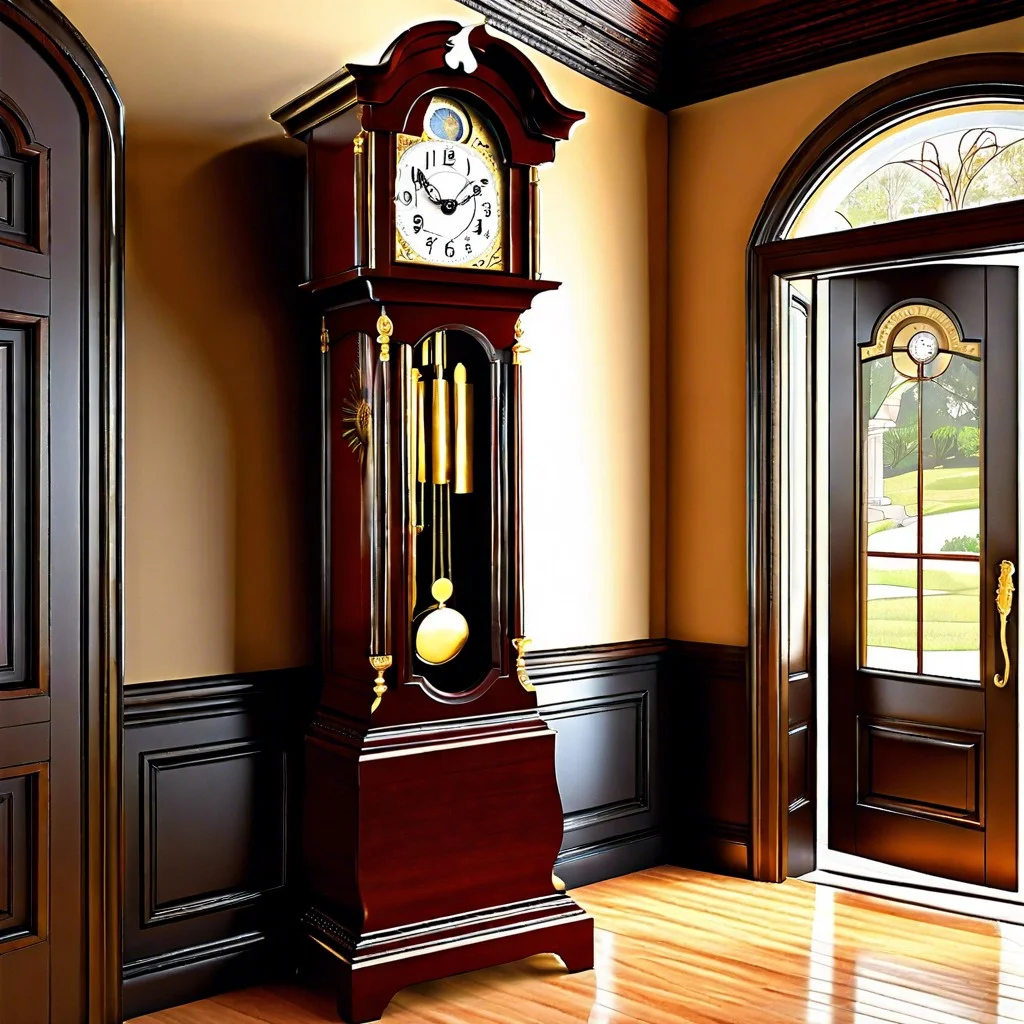
Grandfather clocks, with their timeless appeal, can serve as a stunning centerpiece in a side hall colonial home. Having a rich history and a classic design, they effortlessly create a sophisticated ambiance.
Consider the proportions of your space before selecting one. A tall, striking clock would complement a spacious room with high ceilings. For smaller allotted spaces, opt for a shorter or slender model.
Placement also plays a significant role. Ideally, grandfather clocks should be situated against an interior wall, away from direct sunlight, drafts, and humidity for optimal performance.
Balance the clock next to a doorway, stairway, or centered on a focal wall for a picturesque view. Graceful and beautiful, these clocks not only tell time but also narrate the story of a bygone era, enhancing the historical charme of a side hall colonial home.
White Picket Fence for Exterior
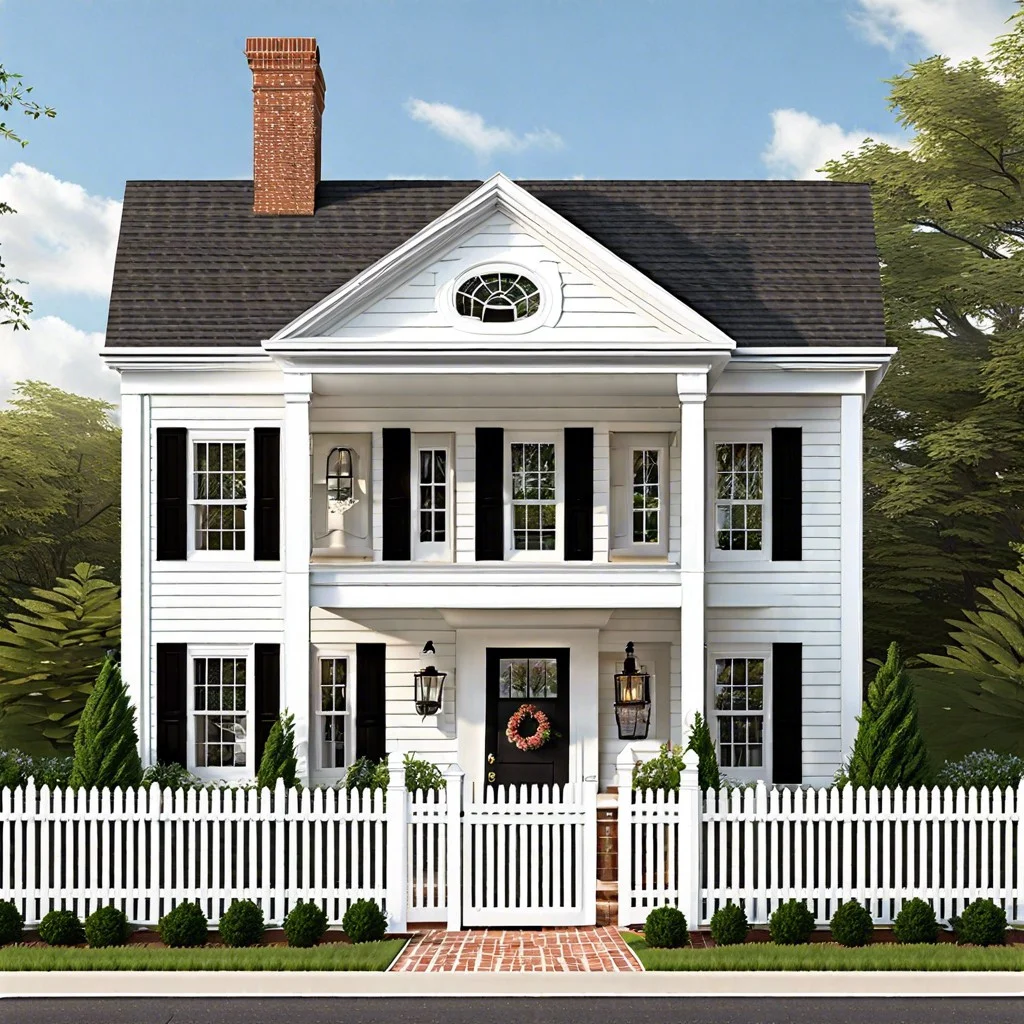
A white picket fence exemplifies the charm of side hall colonial style. It adds an instant curb appeal, creating or enhancing a welcoming, homey atmosphere. The charm of the white picket is in its simplicity and historical connotation, signifying a safe, happy home.
Consider these points:
- 1. Material: Traditional picket fences are made of wood, but vinyl options offer a low-maintenance alternative with the same aesthetics.
- 2. Size and Design: Shorter fences emphasize the welcoming nature of the home, while taller ones provide more privacy. Choose a design that complements the architectural details of your home.
- 3. Landscaping: Partner your fence with flowering shrubs, climbing roses or a manicured lawn. This enhances the classic look.
- 4. Gate: Include a matching, well-proportioned gate to complete the look and provide convenient access.
- 5. Maintenance: Regular upkeep is crucial to keep your fence looking pristine. Paint and repair as necessary to prevent weathering.
Follow the above guide to create a visually appealing exterior that complements your colonial style home with a white picket fence.
Brick or Stone Exterior Finish
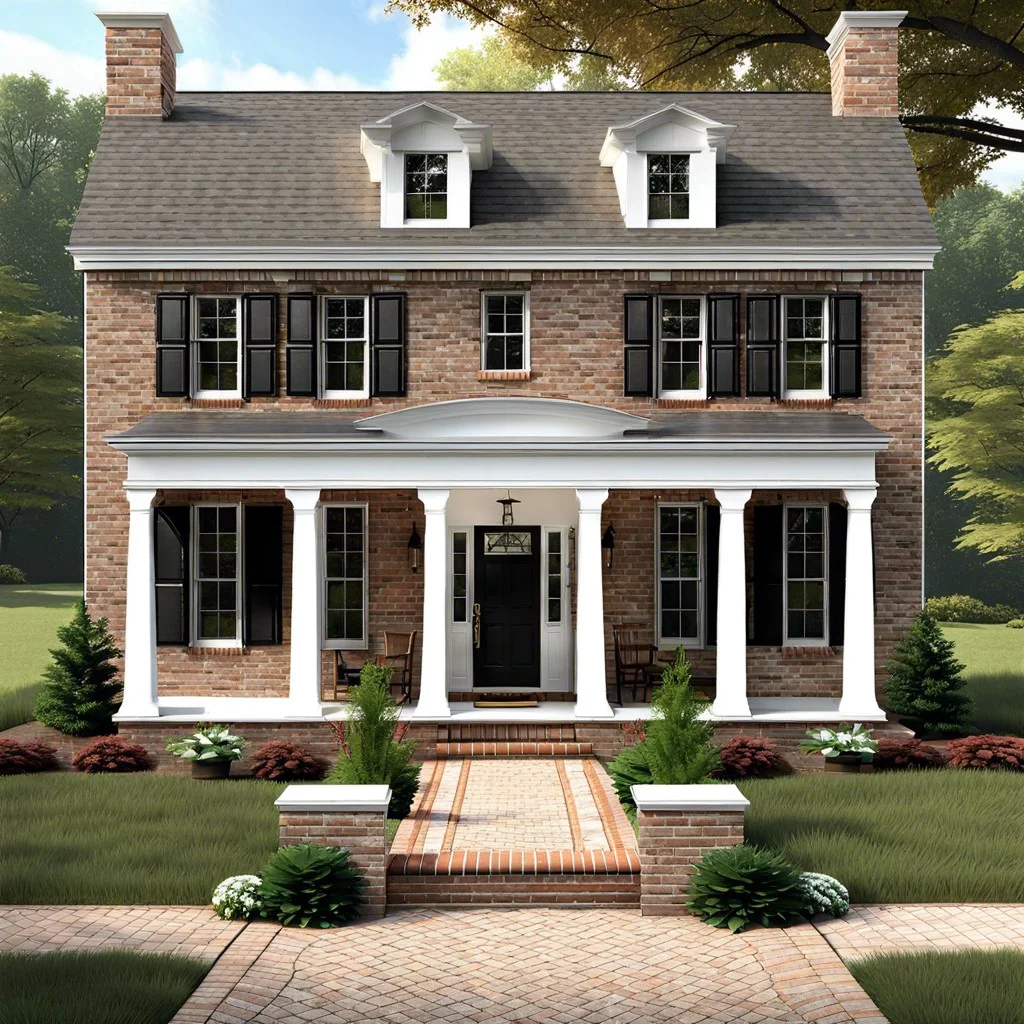
Having your home finished with traditional brick or stone instantly contributes to the colonial aesthetic. Both options, while presenting a slightly different artistic feel, offer compelling architectural value. Natural stone adds an elegantly rustic touch, boasting shades that evolve exquisitely with the passing of seasons. Brick, on the other hand, bears a timeless appeal, invitational in its warmth.
It’s important to consider both durability and aesthetic appeal. Brick and stone have been used in construction for hundreds of years, which attests to their resilience. On the aspect of styling, the distinct textures they bring can lend depth and character to your home exterior, especially under the play of sunlight.
Aside from the charm, a brick or stone exterior requires minimal maintenance. It stands up well against weather conditions, thus ensuring your colonial home maintains its historic appeal for generations to come. It’s a wise investment that offers both stunning visuals and longevity.
Recap
